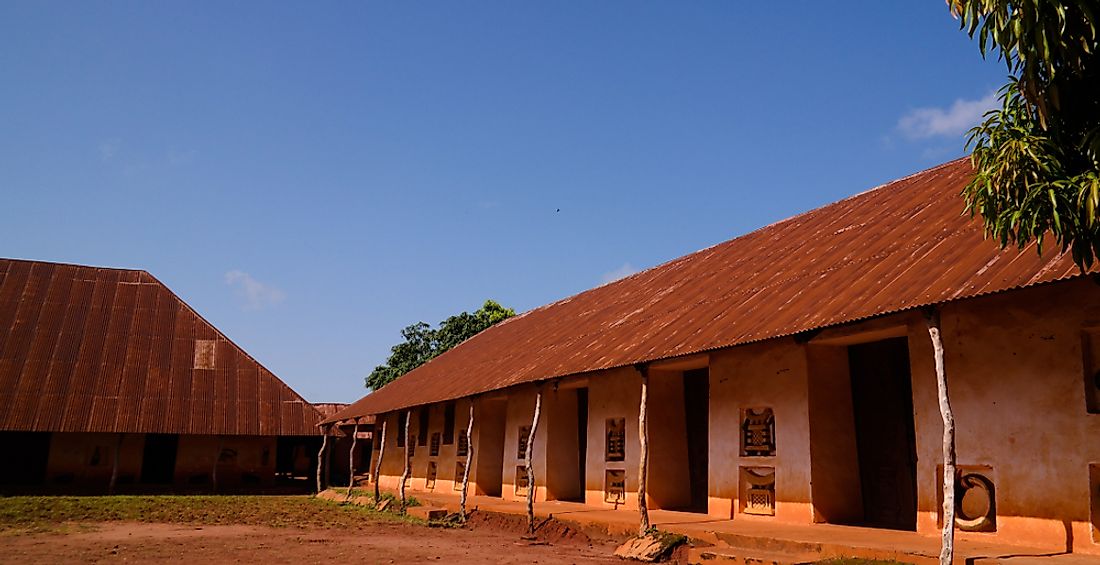Dahomey Royal Palaces Of Abomey, Benin

Benin is on the African Coast, and it is particularly rich in culture. Benin was home to one of the most powerful kingdoms before the French occupation of the nation. The Dahomey kingdom is credited with establishing one of Benin's renowned cultural landmarks in the modern day. For almost three centuries, Dahomey's royalty ruled the present-day Benin from these earthen walls.
5. Description and History
In the period between 1695 and 1900, the Fon people of the town of Abbey were ruled by a successive of 12 Kings. The successive dynasties heavily relied on the trade of slavery, gaining wealth from European merchants in exchange for slaves. Each of the kings built a mud palace in enclosed royal grounds. The palaces were decorated with bas-reliefs, sculptures, and murals and were centers for the development of various craft styles. Bas reliefs illustrated the evolution of the kingdom, indigenous customs and rituals, war victories and resistance to colonial occupation. The palaces were however extensively burnt by King Behanzin of Abomey in 1892, as an act of defiance against French rule. The palaces of King Glѐlѐ and King Ghѐzo are part of the Historical Museum of Abomey, while the rest of the palaces remain uninhabited.
4. Tourism
The Royal Palaces of Abomey, being a UNESCO cultural world heritage site, are ranked as one of the most famous tourists attraction sites in Abomey and the greater Benin. The palaces are vital representations of Benin's cultural heritage and attract thousands of tourists from across the world yearly.
3. Uniqueness
The palaces are proudly distinct as they relay the former prosperity of the Dahomey kingdom. The Dahomey kingdom was among the most powerful in the West African Coast, and this affluence is affirmed by the ancient palaces. As cradles of art, the embellishments in the palaces serve to showcase old African artistic expression. Erected through different decades, the palaces are living witnesses through various events. They signify organized power as it was before colonial occupation in Africa and are important monuments of Benin's culture and heritage.
2. Natural Surroundings, Sights, and Sounds
The palaces of Abomey are used for traditional ceremonies in modern-day Benin. During these ceremonies, rhythmic music, Benin's rich culture, rituals, religions, and customs are carried out in the complex. These ceremonies have significantly helped with the conservation of the complex, due to the palaces' continued functionality.
The whole complex covered 190 acres (44 hectares) and was surrounded by 20 feet (6m) high wall and had 14 palaces. Each palace had defensible courtyards with closely guarded passages.
1. Threats and Conservation
The palaces have been subject to two calamities which destroyed parts of them; a tornado in 1984 and a fire in 2009. The palaces were listed as UNESCO world heritage site in 1985. The palaces were listed as endangered in the same year, necessitating a comprehensive plan to safeguard their heritage. UNESCO, supported by various countries endeavored on measures to protect the site. These efforts were reinforced in 2007 when Benin's government legalized the protection of the country's cultural heritage. A comprehensive plan for the conservation and management of the site was drafted to guide all activities in the palaces. The site was subsequently removed from the list of endangered sites in 2007. Conservation of the site is overseen by the ministry of culture, while a management board manages stakeholder's interests, including those of the public. Site managers and the local communities are also important players in the preservation of the palaces.







